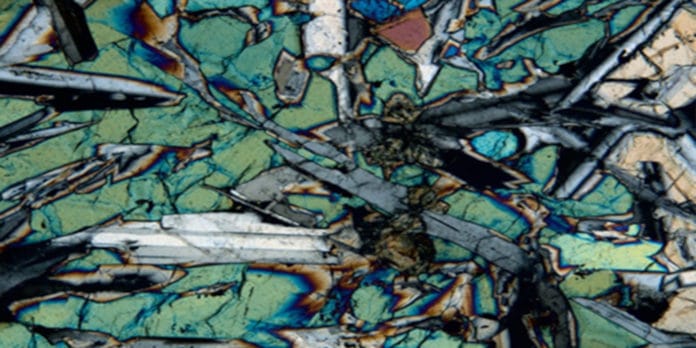While drilling through the Pacific Ocean floor, an international team of scientists from the University of Leeds unearthed a new basalt type- that is believed to have been formed during significant and exceptionally hot volcanic eruptions.
This discovery raises the possibility that the eruptions in the ocean floor sourced in the Earth’s mantle were even hotter and more voluminous than previously thought.
This newly discovered type of basalt is quite different from the rocks of this type in its chemical and mineral makeup. What’s more, the rock may be as different from Earth’s known ocean floor basalts as Earth’s basalts are to the Moon’s basalts.
The eruptions that created the newly discovered basalt were very widespread (covering areas the size of western Europe) and occurred in a relatively short geological timescale of between 1-2 million years.
Dr. Ivan Savov, of Leeds’ Institute of Geophysics and Tectonics in the university’s School of Earth and Environment said, “Now that we know where and how this rock type is formed, we anticipate that ocean floor eruptions originally formed many other rocks that we know will be re-examined and potentially alter our wider understanding of the basalt formation.”
Until now, scientists were unaware of this type of basalt as no new examples have been formed in millions of years. As a result, this new basalt type lay buried deep beneath sediment at the bottom of the ocean.
As mentioned above, scientists discovered the new rock while drilling through the ocean floor 6km down to the Amami Sankaku Basin ocean floor – using their drilling equipment. They then drilled a further 1.5km into the ocean floor, extracting samples that had never before.
The research area was part of the birth of the “Ring of Fire” – a horseshoe-shaped belt known for regular volcanic eruptions and earthquakes. It stretches about 40,000 km around the Pacific and is thought to have begun forming at least 50 million years ago.
Dr. Savov explained: “This was one of the deepest waters ever to be considered for drilling, using a research vessel specifically designed for such challenging deep-sea environments.”
Journal Reference:
- Li, H., Arculus, R.J., Ishizuka, O. et al. Basalt derived from highly refractory mantle sources during early Izu-Bonin-Mariana arc development. Nat Commun 12, 1723 (2021). DOI: 10.1038/s41467-021-21980-0
